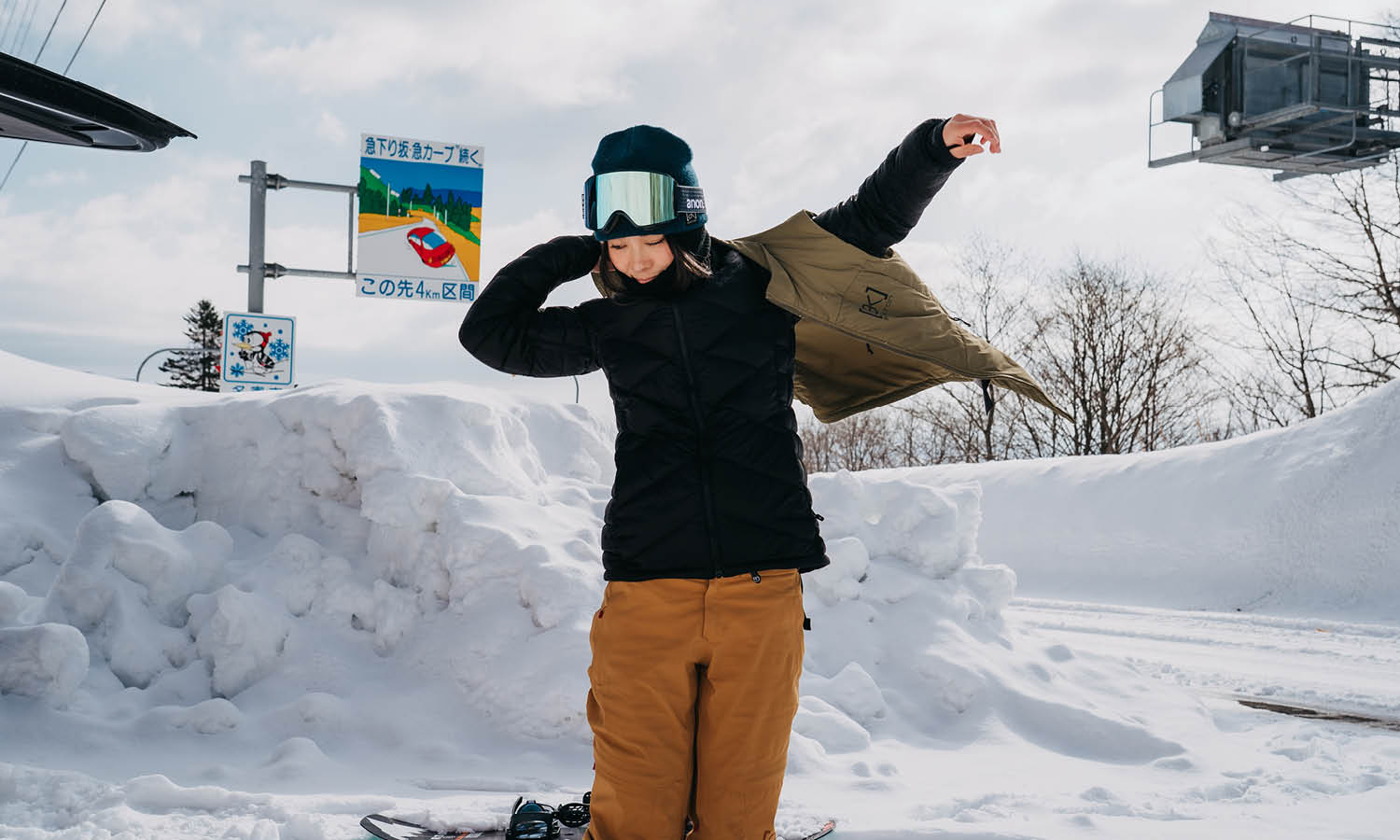
How To Layer For Snowboarding
Snowboarding is a strenuous activity in often harsh, cold conditions. The difference in temperatures from outside the body to inside can be extreme, so the clothing you wear should provide an adequate barrier to protect you from those conditions, while also allowing comfort and flexibility for riding. Proper layering is one of the most important things you should do to prepare for snowboarding. You never know how the weather will change, particularly if you are on a multi-day trip. It’s best to be prepared so that you can ride comfortably and safely.
The idea of layering is simple: your protection from the elements should be adjustable to be able to handle changing conditions and activities. Weather can shift quickly and riding can quickly work up a sweat, so being prepared to put on or take off layers easily is the best way to ensure a comfortable ride. Taking an all-or-nothing approach can lead to overheating and sweating or getting too cold too fast.
You have a lot of options for layering, but the most basic system is also the most common. It works for most people and a lot of conditions. It includes a light base or thermal layer, an insulating midlayer, and a waterproof and windproof outer shell.
It might sound simple, but one of the most common mistakes beginner snowboarders make is inadequate layering. If you’re wonderinghow to layer for snowboarding, take a look at our breakdown for layering.

Thermal or Base Layer
The base layer is what you wear next to your skin. The main job of this layer is to wick away moisture to help keep you warm. It should be a comfortable and quick drying material to ensure your body stays at a safe temperature.
The best materials to look out for are synthetics and wool fibres, not cotton. Many people assume that natural fibres like cotton are best to have next to your skin, but for activities like snowboarding and skiing, you should avoid cotton in every layer. Cotton traps in moisture and will lose all of its insulating value once you get wet, so you’ll quickly get cold and clammy.
Most people wear thermal leggings and long sleeved shirts as their base layer as it provides an easy and reliable base. Others prefer a snowboarding onesie like the Airblaster Ninja Suit, as the one-piece protects from snow or cold air from finding a way in.
No matter the base layer you choose, make sure it fits you well and is comfortable next to your skin.
Shop Thermals:
Mens Thermals
Womens Thermals
Kids Thermals
Insulating or mid-layer
The middle layer acts as your insulating layer. It sits over your base layer and does all the hard work of keeping you warm in low temperatures. You can wear multiple mid-layers if you get cold easily or if it’s an extra cold day. Or if it’s a moderate day, you may be able to get away with just a base layer and outer shell.
Layering your mid-layers is the best way to manage your body temperature, as you can easily add or remove them. Your legs should stay warmer than your torso, so you generally don’t need to add a mid-layer to your lower half.
Fleece mid-layers are a great option for Australian conditions, as they provide a warm and comfortable layer without overheating you, like a puffy insulator might.
Shop Mid-Layers:
Mens Mid-Layers
Womens Mid-Layers
Outerwear
Lastly, the outermost layer will be the shell layer. The shell layer acts to keep out the elements, so it should be waterproof and windproof, while still remaining breathable.
The ideal shell layer will keep cold air and snow from getting in but also allow moisture from sweat to get out. It should fit comfortably over your mid-layers and allow for free movement, but it also shouldn’t be so loose that it lets the elements in.
You should also consider the gear and items you will be carrying on you, as these will likely be stored in your shell layer. Make sure you like the pocket layout and they are easily accessible to you. Some snowboarders like to wearbib pants instead of regular pants. They are snowboarding overalls and can do a better job of keeping out the snow while avoiding things like your pants falling down.
Shop Outerwear:
Mens Jackets, Mens Pants
Womens Jackets, Womens Pants
Kids Jackets, Kids Pants, Kids One-Piece

...don’t forget your hands and feet
Socks and gloves areessential snowboard accessories. Having cold fingers and toes can be a massive hindrance when riding and can even ruin your day. Make sure you have socks that keep your feet warm but don’t cause them to sweat. Look for wick-away and fast drying fabrics like wool. Quality socks are created for performance and comfort from Merino wool, acrylic, nylon, and elastane.
Your gloves or mitts should fit well and provide good protection from the elements, ideally made from water and wind resistant materials on the outer layer. Look for two-layer shells that are breathable, waterproof, and quick drying, so that your hands stay warm but any sweat can easily wick-away. Here’s some of ourkids gloves and mitts for a few great options.
Shop Gloves & Mitts:
Mens Gloves & Mitts
Womens Gloves & Mitts
Kids Gloves & Mitts
It’s important to experiment with your layering and figure out a system that works best for you. You may like to add more base layers or skip a mid-layer because you get warm easily. Everyone is different, so finding out what works for you is the best way to be comfortable. The beauty of layering is that it is flexible and you can add or take away any items you need for different circumstances.
If you have any questions about thehow to layer for snowboarding or are looking for advice on thetop snowboard apparel brands, get in touch with our friendly team of experts today.
